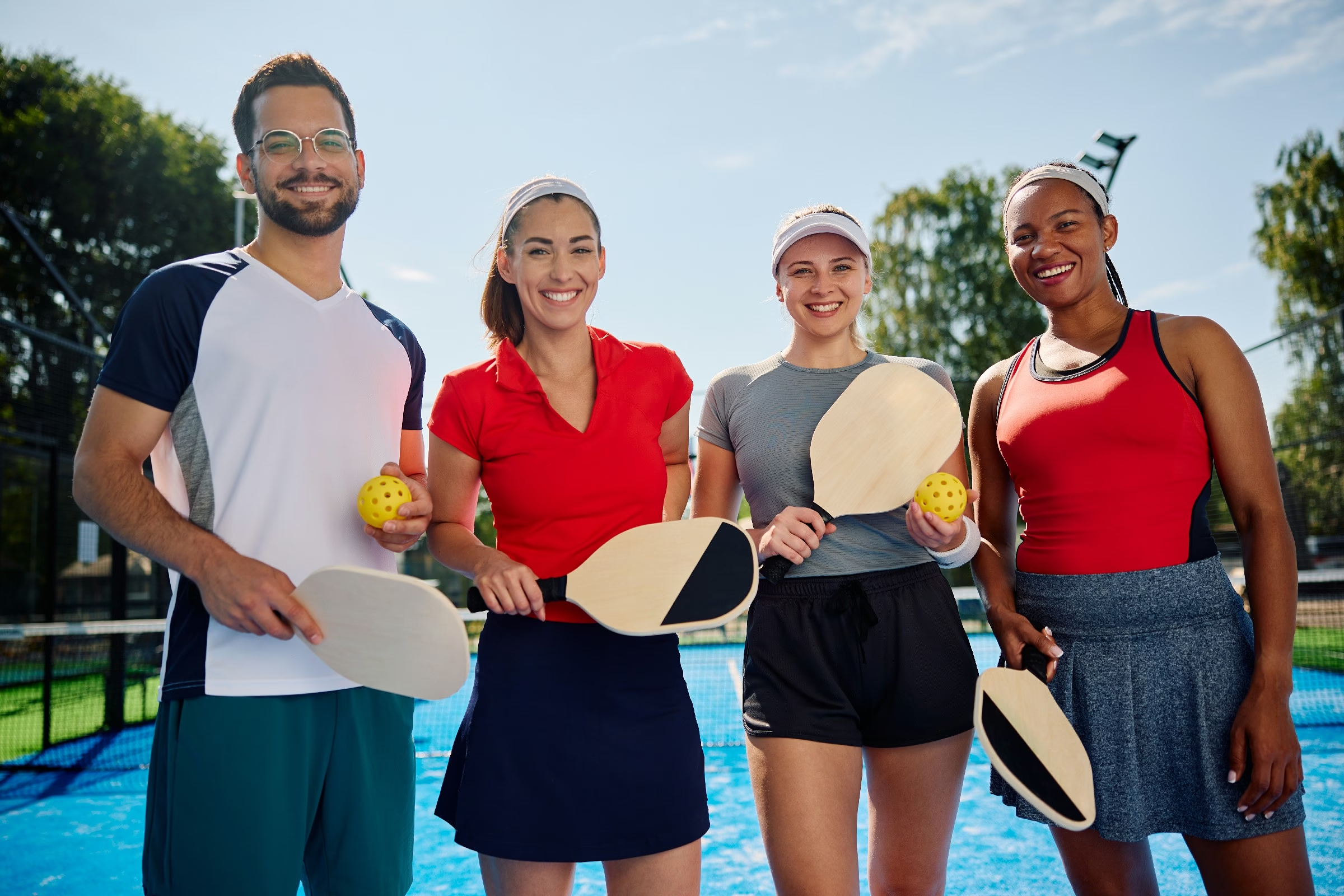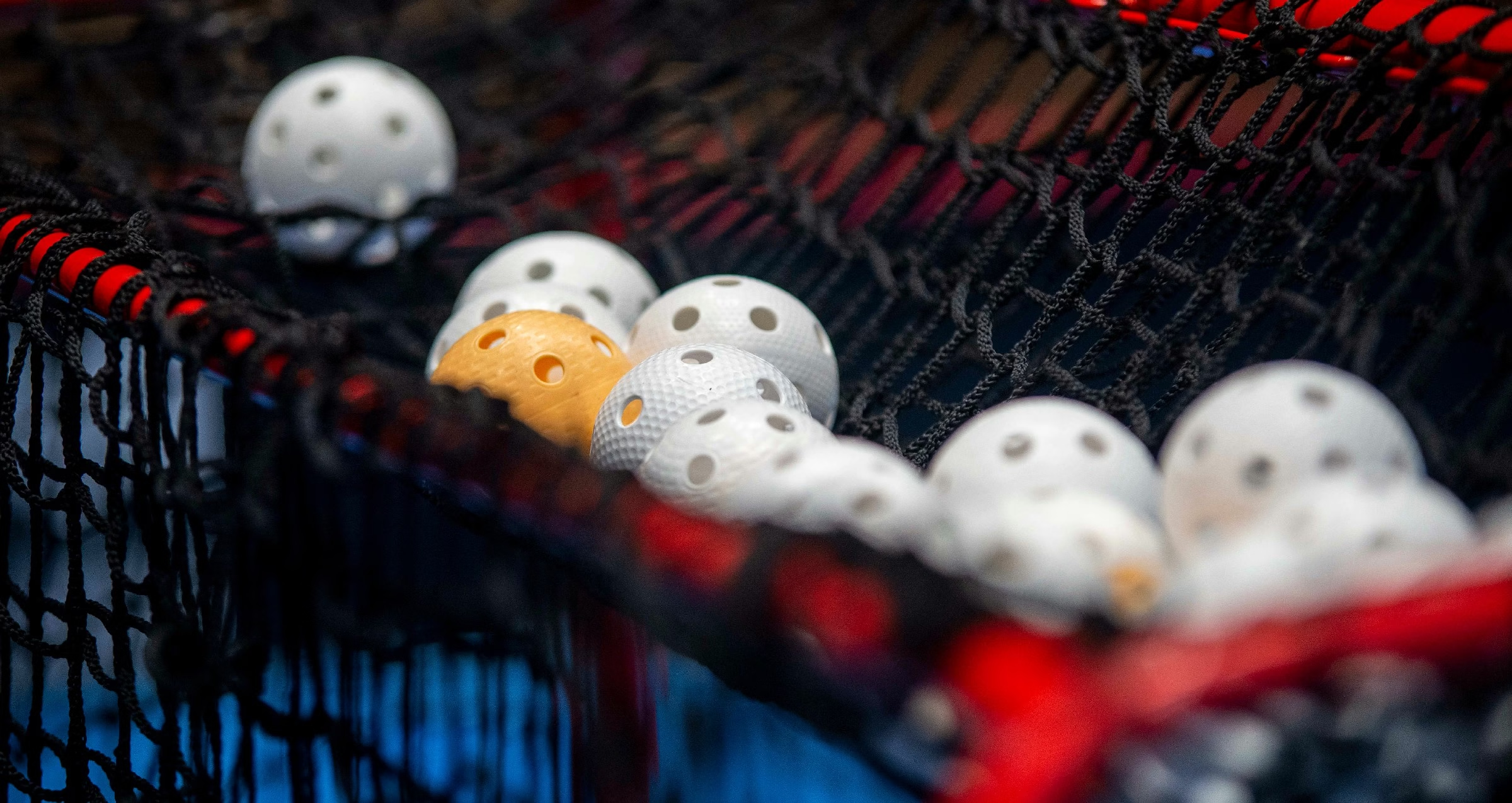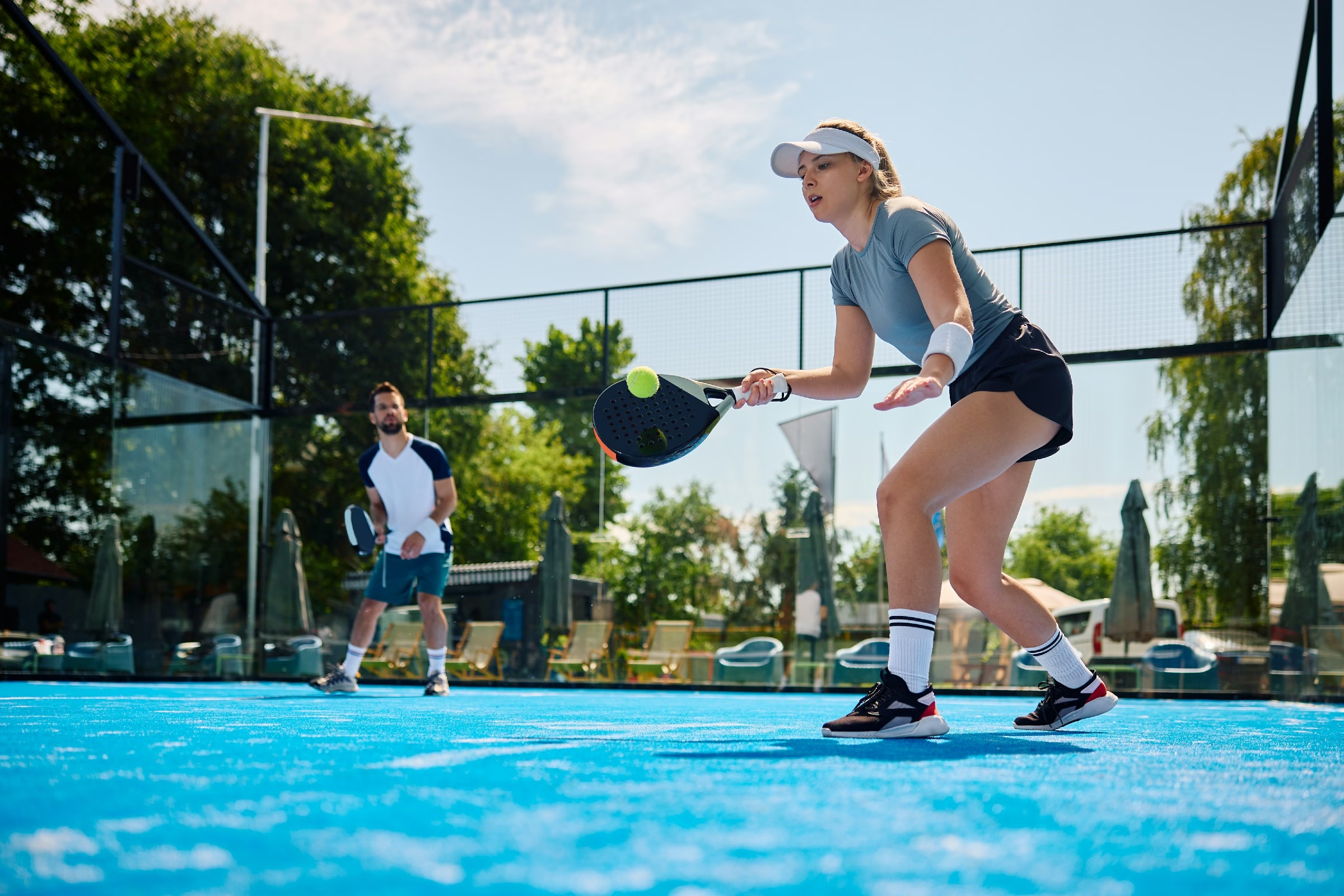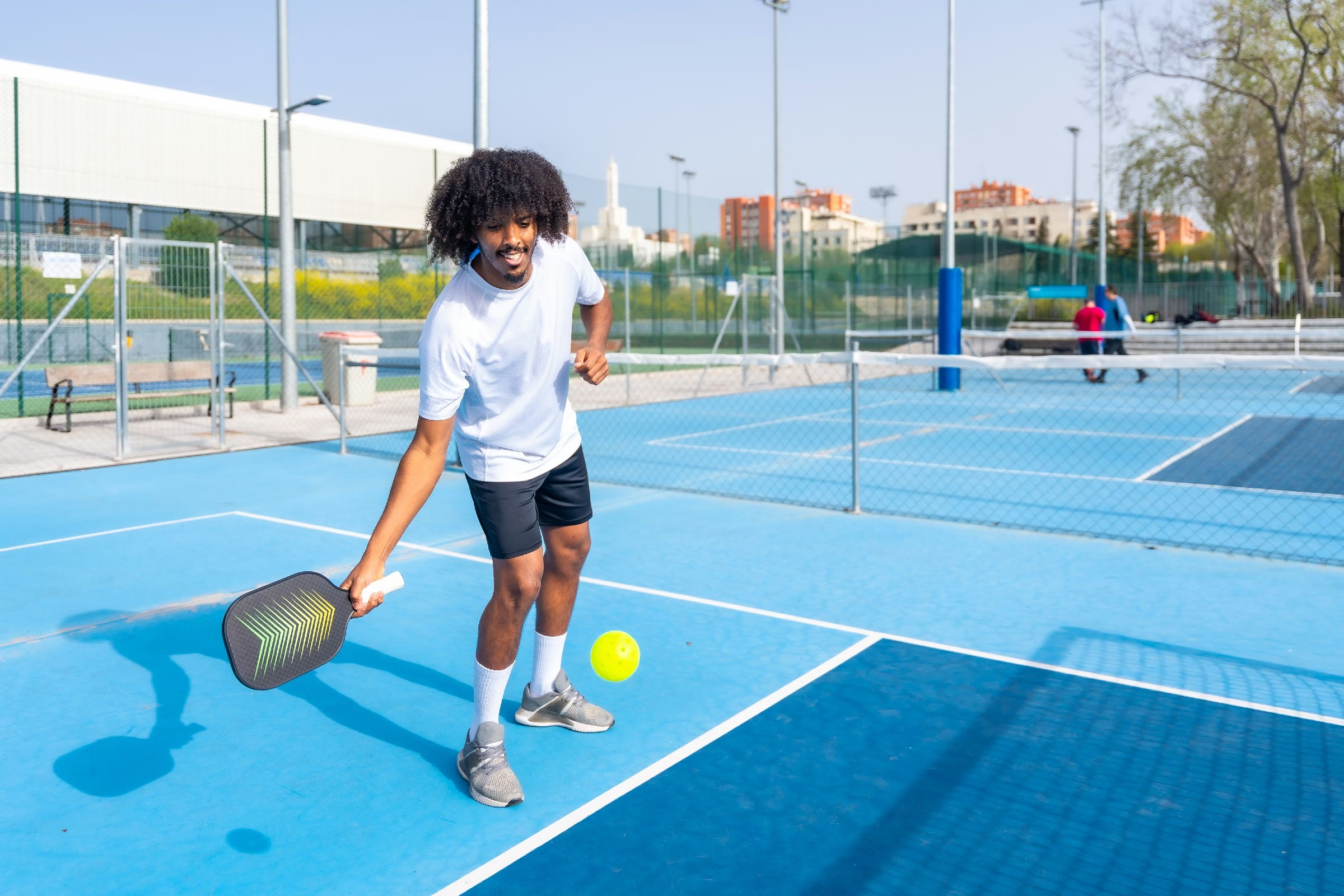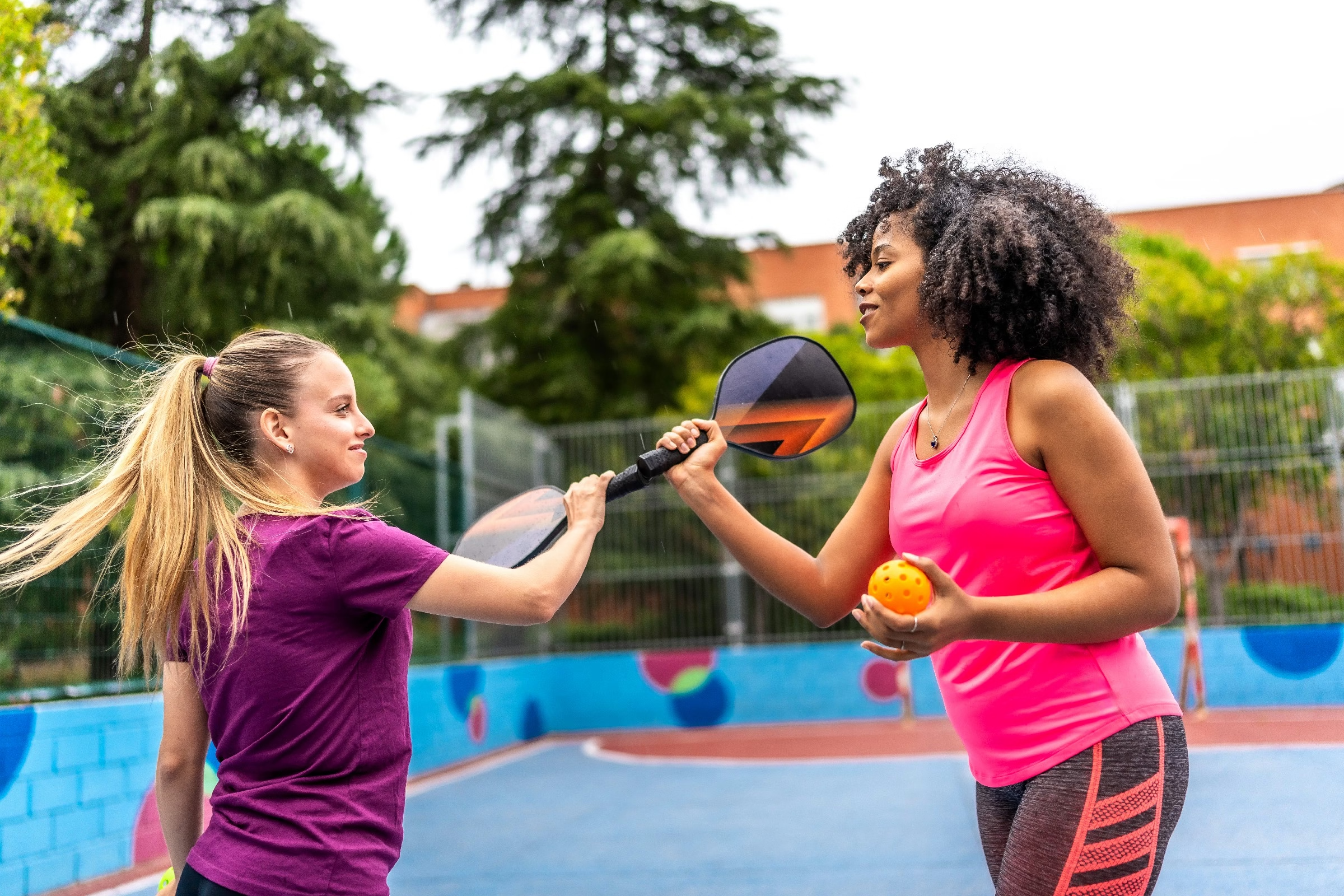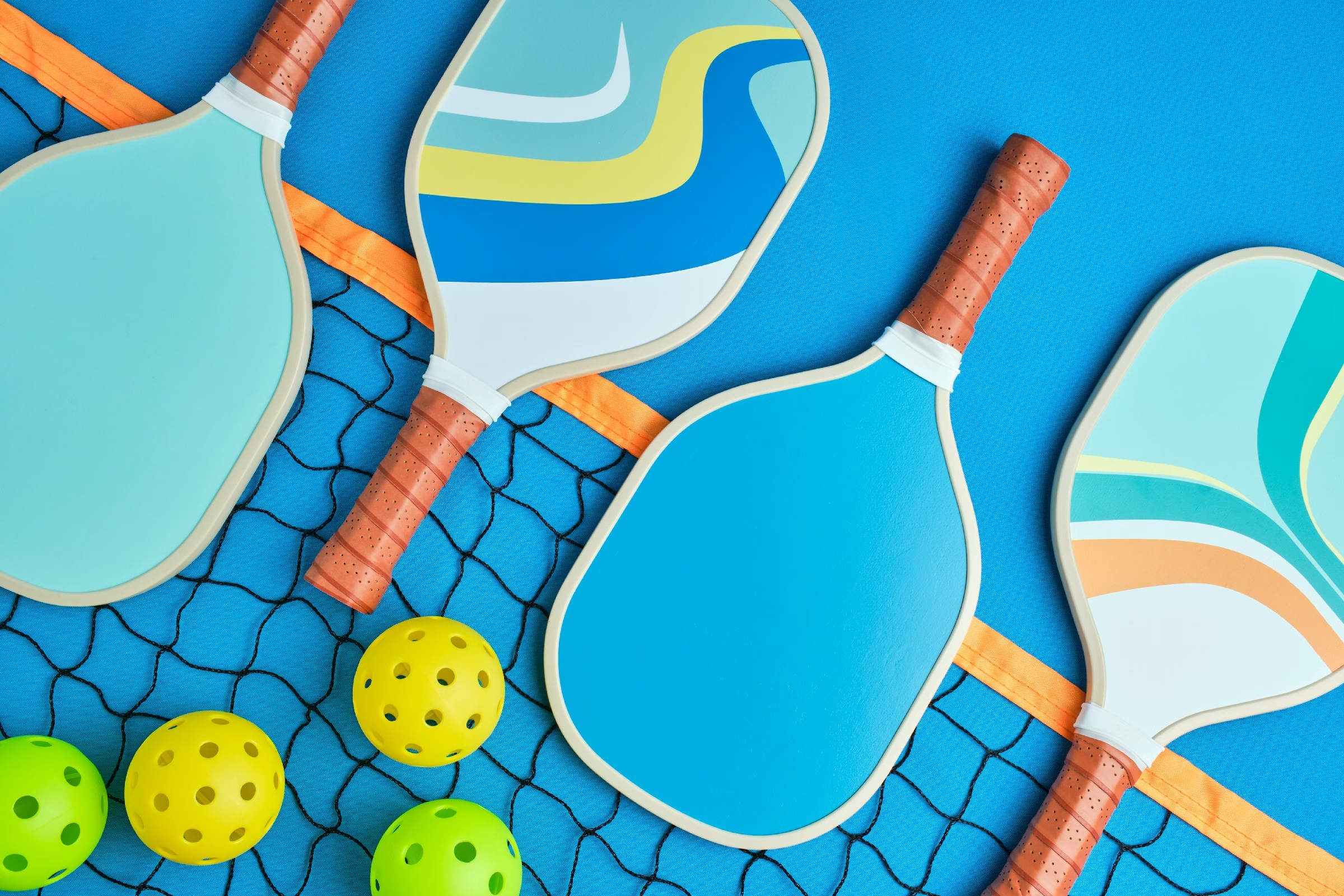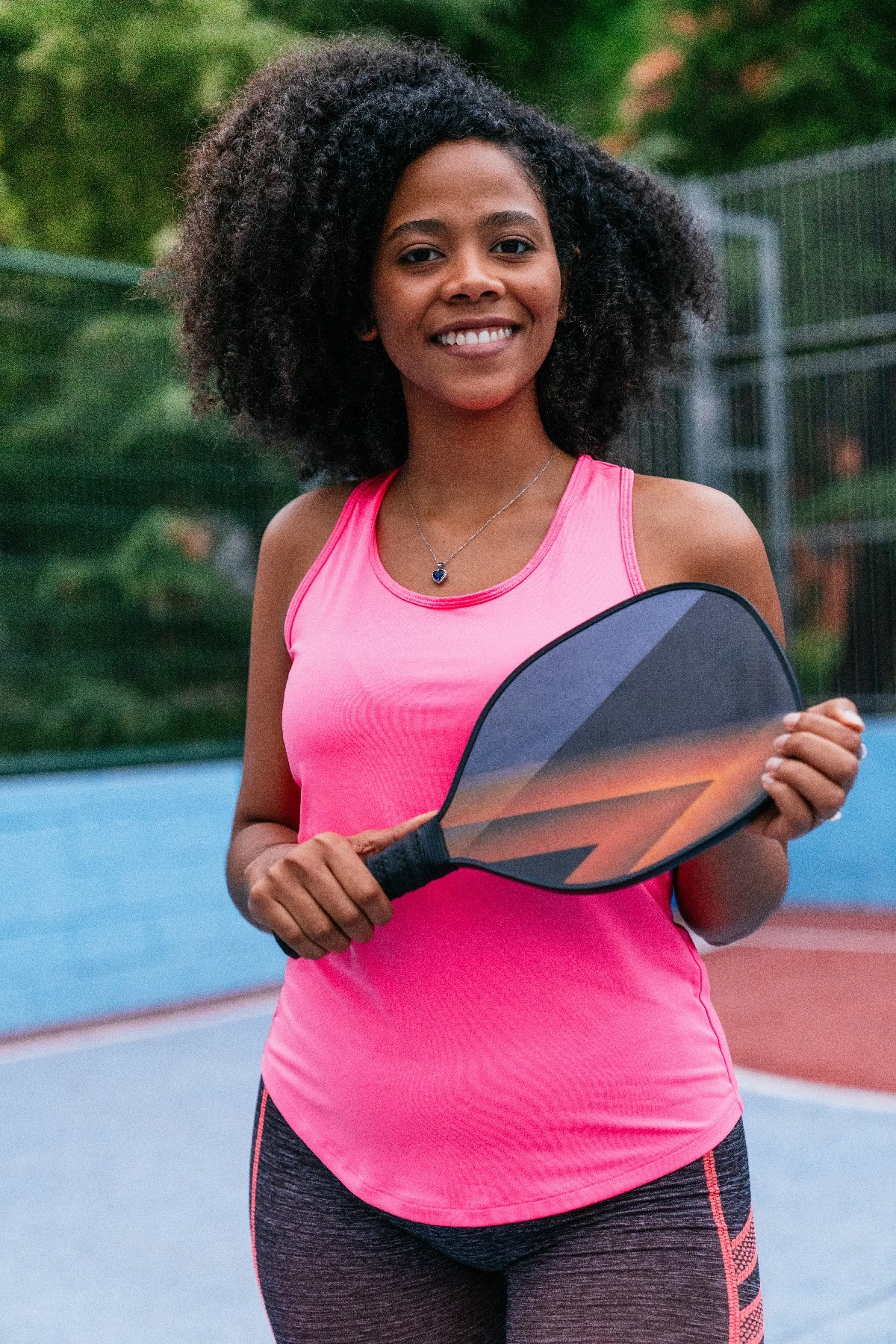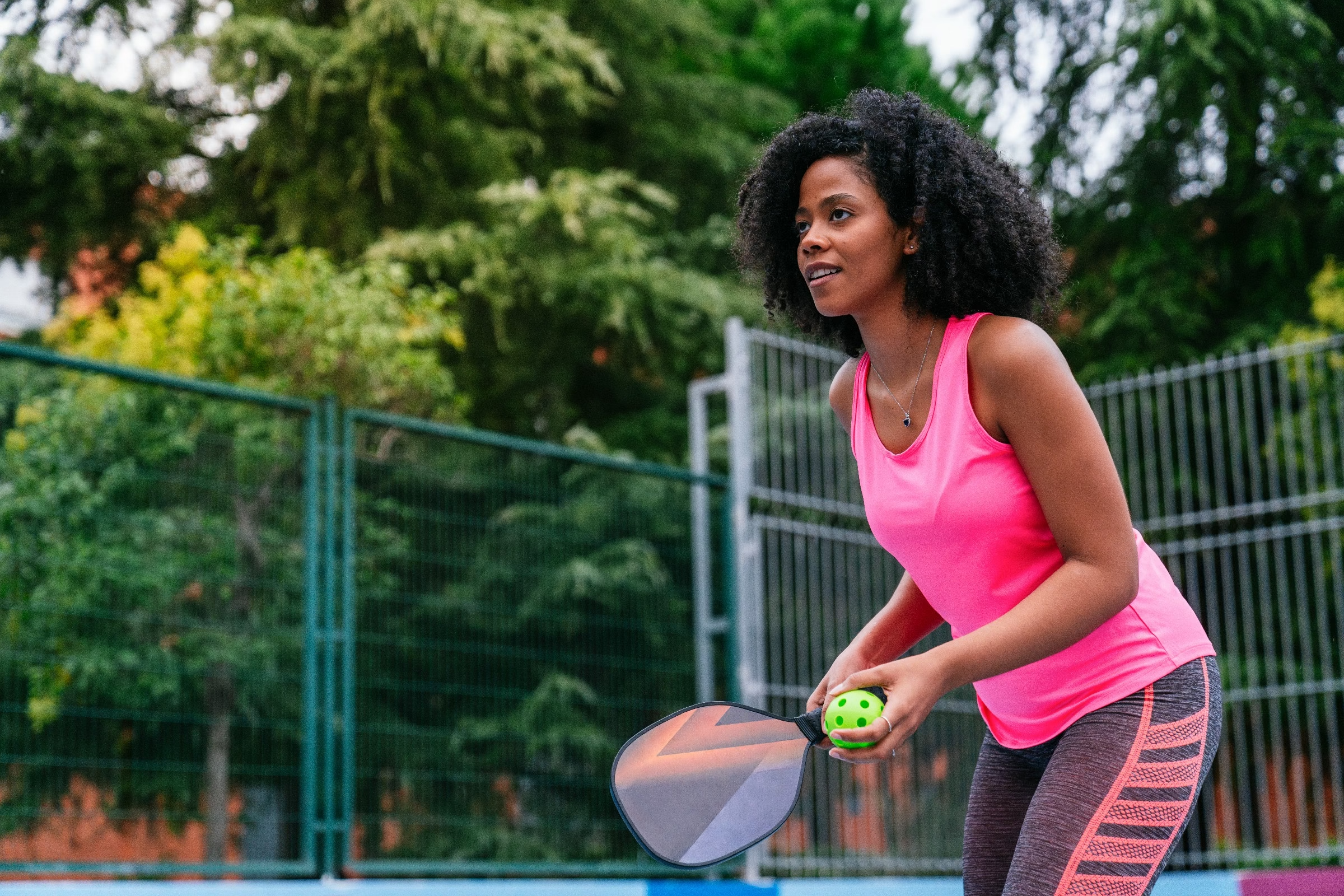Blog
what is the difference between pickleball and paddle tennis

As the sun rises on local courts across the nation, two distinct games have captured the hearts of players of all ages, each offering its own unique blend of competition and camaraderie. On one side of the net, pickleball enthusiasts wield their paddles wiht precision, while on the other, paddle tennis aficionados showcase their skill in a fast-paced match. Though the two sports share a common origin and invoke similar excitement, they are marked by a constellation of differences that can leave newcomers puzzled. In this article, we delve into the nuances that set pickleball and paddle tennis apart, exploring their history, equipment, rules, and playing styles. whether you’re contemplating which game to pick up or simply wish to understand the distinctions better, join us as we unravel the captivating world of thes racquet sports.
Table of Contents
- Understanding the Origins of Pickleball and Paddle Tennis
- Exploring the Court Dimensions and Equipment Differences
- Comparing the rules and Scoring Systems
- Analyzing Playing Styles and Techniques Unique to Each Sport
- Identifying Health Benefits and Social Aspects of Both Games
- Making an Informed Choice: Which Sport Suits You Best?
- Q&A
- The Conclusion
Understanding the Origins of Pickleball and Paddle Tennis
to truly appreciate the differences between pickleball and paddle tennis, it’s essential to explore their unique histories. Pickleball was invented in 1965 by three fathers — Joel Pritchard, Bill Bell, and Barney McCallum — in Bainbridge Island, Washington. The game rose from a simple backyard pastime into a popular sport by incorporating elements of tennis, badminton, and table tennis. Initially played with wooden paddles and a perforated plastic ball, pickleball has evolved over the years, with players now using lightweight materials and a variety of ball designs.
On the other hand, paddle tennis, which dates back to the late 19th century, emerged as a variation of traditional tennis. Originating in the united States, the game gained traction in urban areas where space was limited, leading to the development of smaller courts. Unlike pickleball, paddle tennis uses solid paddles and a spongy, rubber ball, which creates a distinct playing style. Over the decades, it has cultivated a dedicated following, notably in coastal regions where the sport enjoys its most excited players.
Despite their divergent paths, both sports share common threads that connect them. Here are a few notable similarities and differences:
| Feature | Pickleball | Paddle Tennis |
|---|---|---|
| Year Established | 1965 | Late 19th century |
| Playing surface | Indoor/Outdoor Court | Outdoor Court |
| Equipment | Plastic ball & composite paddles | rubber ball & solid paddles |
| scoring System | rally scoring | Traditional scoring |
Exploring the Court Dimensions and Equipment Differences
Understanding the differences in court dimensions for pickleball and paddle tennis can considerably enhance gameplay strategy and readiness. Pickleball courts are smaller,measuring 20 feet wide by 44 feet long for both singles and doubles matches. This compact design not only encourages quick reflexes and agile movements but also promotes a fast-paced game. In contrast,paddle tennis courts are larger,with a dimension of 20 feet wide by 50 feet long for doubles matches,creating a spacious environment that facilitates longer groundstrokes and strategic positioning.
When it comes to the playing surface, the distinctions continue. Pickleball is typically played on smooth surfaces such as polymer or asphalt,while paddle tennis courts are usually constructed from synthetic materials or clay. These surface types affect ball behavior and player traction, which can influence how players adapt their playing style. Additionally, the net height in pickleball stands at 36 inches at the ends and 34 inches in the center, whereas paddle tennis nets are lower at 34 inches across. This variation impacts the trajectory of shots and the overall dynamics of the games.
Both sports also utilize distinct equipment that further contributes to their unique identities. In pickleball, players use solid, perforated paddles that are typically made of lightweight materials like composite or wood. The balls are plastic with holes, resembling a larger wiffle ball. Conversely,paddle tennis paddles are solid and generally made from a robust foam or wood composite,with no holes in the paddle.The balls used in paddle tennis are slightly smaller and are frequently enough constructed with a pressurized core, resulting in a different bounce and speed. Below is a comparison table highlighting the key equipment specifications:
| Aspect | Pickleball | Paddle Tennis |
|---|---|---|
| Court Size | 20′ x 44′ | 20′ x 50′ |
| Net Height | 36″/34″ | 34″ |
| Paddle Material | Composite/Wood | Foam/wood Composite |
| ball Type | Plastic w/Holes | Pressurized, No Holes |
Comparing the Rules and Scoring Systems
When comparing pickleball and paddle tennis, the rules of play differ in several notable ways. in pickleball, the game is played on a rectangular court that measures 20 by 44 feet for doubles. The serve is executed underhand, and players must let the ball bounce once before returning it. This promotes longer rallies and strategies based on placement and positioning. Conversely, paddle tennis is typically played on a smaller court, 20 by 50 feet for doubles, with the inclusion of walls that players can use to their advantage. The serve in paddle tennis is also an underhand stroke but allows for a more aggressive return due to the lack of a bounce requirement.
scoring systems between the two sports further distinguish their gameplay dynamics. Pickleball employs a unique scoring method where only the serving team can earn points, and games are generally played to 11 points, with a margin of at least 2 points to win. This creates a focused competitive atmosphere that emphasizes service opportunities. In contrast,paddle tennis follows a more traditional scoring approach akin to tennis,where both teams can score,and matches often consist of the best of three sets,with each set played to 6 games. Such rules allow for potential score changes even when a team is not serving.
| Aspect | Pickleball | Paddle Tennis |
|---|---|---|
| Court Size | 20 x 44 feet | 20 x 50 feet |
| Serve Type | Underhand | Underhand |
| Bounce Rule | Must bounce once | No bounce requirement |
| Scoring | Only serving team can score (to 11 points) | Both teams can score (best of 3 sets) |
These rules and scoring systems create distinct gameplay experiences unique to each sport. Players of pickleball may find that the emphasis on serving and strategic placement caters to a more controlled rhythm, while paddle tennis offers a fast-paced environment where the use of walls can dramatically alter outcomes. Ultimately, the choice between pickleball and paddle tennis may boil down to personal preference in play style and competition dynamics.
Analyzing Playing Styles and Techniques Unique to Each Sport
When comparing pickleball and paddle tennis, one of the most striking differences lies in their playing styles. Pickleball, characterized by its fast-paced and strategic gameplay, encourages players to engage in a variety of shot techniques, including dinks, volleys, and smashes. The small court and the nature of the net height invite players to employ a blend of finesse and power, making the game accessible yet challenging. Players often find themselves in quick exchanges, relying on soft hands for delicate shots and aggressive tactics for attacks, creating a dynamic flow throughout matches.
On the other hand, paddle tennis emphasizes an entirely different rhythm and strategy. With a solid paddle and a slightly larger court, the sport leans towards power-driven gameplay where players are more inclined to execute overhead smashes and hard drives.The absence of a double bounce rule means that players must be ready to react instantly, making reflexes and positioning paramount. This results in fewer lengthy rallies compared to pickleball, as players are frequently enough encouraged to strike decisively and capitalize on openings to maintain pressure on their opponents.
To further illustrate the distinctions, consider the following table that highlights the key differences in playing techniques and styles:
| Aspect | Pickleball | Paddle Tennis |
|---|---|---|
| game Pace | Fast with strategic pauses | Rhythmically powerful |
| Dominant Techniques | Dinks, volleys, drop shots | Overhead smashes, hard drives |
| player Movement | Side to side, quick shifts | Forward and backward, seeking space |
Identifying Health Benefits and Social Aspects of Both Games
Both pickleball and paddle tennis not only bring physical benefits but also foster a vibrant community around them. Pickleball, with its unique combination of elements from badminton, tennis, and table tennis, emphasizes agility, quick reflexes, and strategic play. This sport is particularly appealing to a wide range of age groups, encouraging social interaction during gameplay. Many players find that joining a pickleball league or participating in tournaments creates opportunities for friendship and camaraderie, enhancing emotional well-being through the joy of playing with others.
On the flip side, paddle tennis focuses on a slightly different skill set, including powerful strokes and strategic positioning on the court. The sport is played in a more intimate setting,frequently enough fostering close-knit social ties among participants. Paddle tennis courts are typically smaller, making the game feel more personal and encouraging players to engage more deeply with their partners and opponents. The atmosphere is often kind and relaxed, creating a welcoming community that thrives on mutual encouragement and support.
In terms of health benefits,both sports offer important advantages. engaging in regular play can lead to improved cardiovascular health, enhanced hand-eye coordination, and increased flexibility.Here’s a quick comparison of the health benefits:
| Health Benefits | Pickleball | Paddle Tennis |
|---|---|---|
| Cardiovascular Health | ✅ | ✅ |
| Hand-Eye Coordination | ✅ | ✅ |
| Flexibility | ✅ | ✅ |
| Social Interaction | Strong | Moderate |
Ultimately,both games contribute positively to one’s health and social life,presenting unique advantages that cater to different preferences. Whether one finds joy in the fast-paced,dynamic nature of pickleball or prefers the powerful exchanges of paddle tennis,the essence of both lies in their ability to unite people through movement,strategy,and enjoyment.
Making an Informed Choice: Which Sport Suits You Best?
When comparing pickleball and paddle tennis, there are key differences to consider that can definitely help guide your decision on which sport resonates with your lifestyle and preferences. Both sports offer a dynamic blend of fun and fitness, but they differ in terms of court size, equipment, and gameplay. Pickleball is played on a smaller court, similar to badminton dimensions, while Paddle Tennis utilizes a larger court akin to that of traditional tennis. This size difference leads to distinct playing styles and strategies that cater to various athletic abilities.
The equipment used in each sport provides another avenue for differentiation. In pickleball, players use a solid paddle and a lightweight plastic ball with holes, which gives the game a unique feel and style of play. Conversely, paddle tennis employs a perforated paddle, heavier than its pickleball counterpart, paired with a spongy ball that is designed for more power and control. This divergence in equipment not only shapes the playing experience but also influences how each sport is perceived by players and onlookers alike. Here’s a quick overview of the equipment:
| Sport | Paddle Type | Ball Type |
|---|---|---|
| Pickleball | Solid Paddle | Lightweight Plastic Ball |
| Paddle Tennis | Perforated Paddle | Spongy Tennis Ball |
Lastly, the scoring systems and rules differ, which can impact your enjoyment depending on how you prefer to compete. Pickleball typically uses a rally scoring system to 11 or 21 points, allowing for engaging quick matches, while paddle tennis often adopts traditional game scoring, which may appeal to those who enjoy a classic tennis structure. Additionally, the social aspect of each sport can vary; pickleball is known for its welcoming community and social play, whereas paddle tennis may offer a more competitive environment.Understanding these factors can greatly aid in making an informed choice that aligns with your personal athletic desires.
Q&A
Q&A: What is the Difference Between Pickleball and Paddle Tennis?
Q1: What is pickleball?
A1: Pickleball is a hybrid sport that blends features from tennis, badminton, and ping pong.It’s played on a smaller court with a distinctive net, using a hard paddle and a lightweight plastic ball with holes. The game can be played in singles or doubles,featuring an element of both strategic and fast-paced play.
Q2: And what about paddle tennis? What makes it unique?
A2: Paddle tennis shares some similarities with pickleball but has its own flair. Played on a smaller court than tennis (but larger than pickleball), it features solid paddles and a rubber ball. Paddle tennis courts often have walls that players can use for rebounds—adding an exciting dimension to gameplay.
Q3: How are the courts different for each sport?
A3: Great question! Pickleball courts, measuring 20 by 44 feet for doubles, are marked by genuine simplicity. They include a 34-inch high net and a “no-volley zone” close to the net,often referred to as the kitchen. Conversely, paddle tennis courts are approximately 20 by 50 feet and include a higher net set at 36 inches. Some versions of paddle tennis also incorporate walls, similar to squash courts, which can be used tactically.
Q4: What equipment do you need for each sport?
A4: For pickleball,you’ll need a sturdy paddle,a plastic ball with holes,and court shoes that provide good grip. Paddle tennis, on the other hand, requires a solid paddle (frequently enough perforated) and a rubber ball that’s slightly larger than a pickleball. Both sports emphasize lighter paddles compared to traditional tennis rackets, making them accessible to players of all ages.
Q5: Can you play both sports in the same venue?
A5: While they share similarities and can use similar spaces, pickleball and paddle tennis typically require distinct court markings and equipment. Some sports facilities may have both courts side by side, but you’ll frequently enough see entirely separate setups to accommodate each sport’s unique requirements.
Q6: How does the scoring differ?
A6: In pickleball, games are usually played to 11, 15, or 21 points, with players needing to win by at least two points. Only the serving team can score points. Paddle tennis has its own scoring format, mirroring conventional tennis but often modified for quicker play. Many games are played as sets, usually best of three, with points awarded to either the server or receiver.
Q7: What skills do you need to excel in each game?
A7: Both sports require a combination of strategy, hand-eye coordination, agility, and teamwork. Pickleball tends to reward finesse and precise placement due to the smaller court, while paddle tennis invites powerful shots and strong wall play, making it essential for players to read the game well.
Q8: Which sport is easier for beginners?
A8: Many find pickleball to be more beginner-friendly, thanks to the simplicity of its rules, smaller court size, and slower-paced ball. Paddle tennis,with its dynamic wall play and slightly faster game,may take a bit longer to master for new players. Though, both sports are designed to be accessible, ensuring everyone can enjoy the fun.
Q9: Can you play both sports casually?
A9: Absolutely! Both pickleball and paddle tennis are great for casual play.Whether you’re looking to get active with friends or join a community game, each sport provides plenty of opportunities for social engagement and enjoyment.
Q10: So, which sport should I choose?
A10: Ultimately, the choice between pickleball and paddle tennis boils down to personal preference! Explore both sports, take a few classes, or ask your friends to join. Embrace the excitement, challenge yourself, and relish the camaraderie of either game. After all, the true essence lies in the enjoyment of playing and being active!
the Conclusion
As we wrap up our exploration of the distinctions between pickleball and paddle tennis, it’s clear that while both sports share a common thread of fun and friendly competition, they cater to different play styles and preferences. Pickleball, with its vibrant community and accessibility, welcomes players of all ages, making it a delightful pastime for families and friends alike. On the other hand, paddle tennis, with its unique court and strategic play, attracts those seeking a more nuanced game that emphasizes skill and precision.
Ultimately, whether you choose to grab a paddle for pickleball or a bat for paddle tennis, both sports offer a fantastic avenue for exercise, social interaction, and lots of laughter. So,why not give them both a try? Whichever you pick,you’re bound to have a ball!

